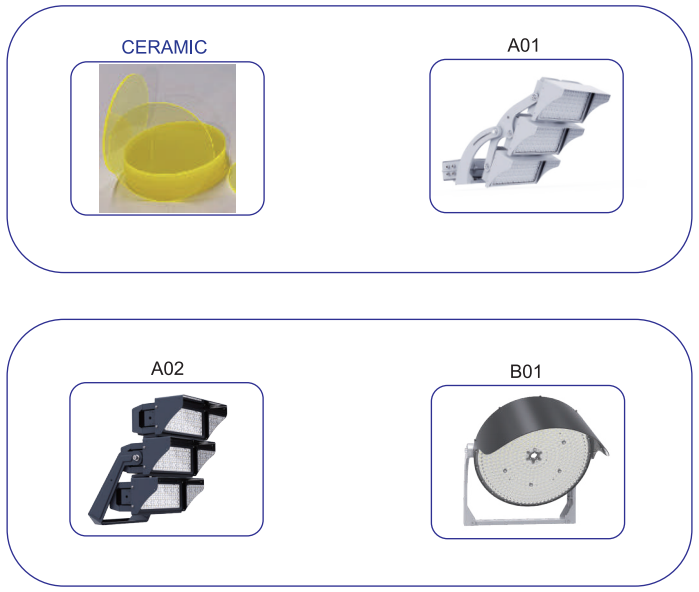NCAA Basketball court Lighting Requirements: Best Flood lights For Indoor/Outdoor Basketball Court
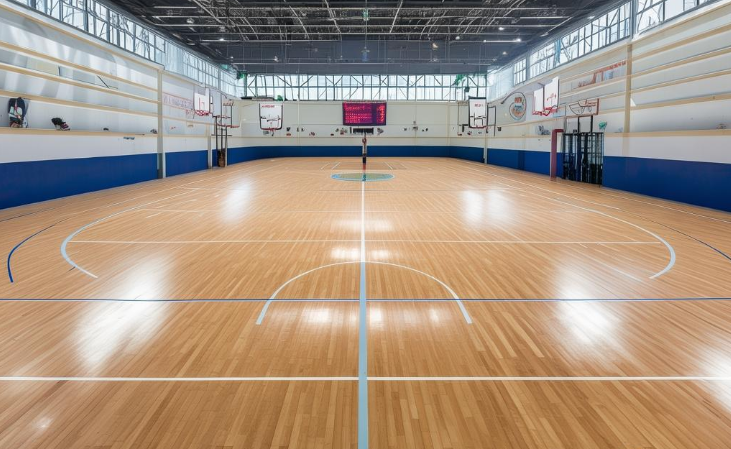
Directory:
1. Best Lighting Practices: Standard Intercollegiate Play
2. Best Lighting Practices: National Broadcast
3. Best Lighting Practices: Regional Broadcast
4. Best Lighting Practices: National Broadcast Final Site
5. Best Lighting Practices: NCAA Basketball Championships
6. Best Lighting Practices: Performance Checklist
7. Indoor/Outdoor Basketball Court Lighting Performance Checklist: Survey Sample
8. Best Flood lights For indoor/outdoor basketball court
1. Best Lighting Practices: Standard Intercollegiate Play
Following these recommended best practices will help ensure quality of light needed for the safety of participants and the enjoyment of spectators, as required.
Horizontal light levels: 80 footcandles
Horizontal uniformity: 2.0:1
Grid spacing: 10 ft x 10 ft
Typical facility layout:
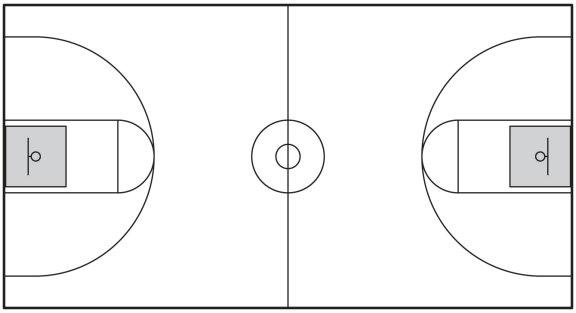
1.1 For new facilities or upgrades, it is recommended to consult a lighting professional for optimal luminaire placement and catwalk locations.
1.2 As a general rule, due to mounting heights, lower wattage luminaires are used, commonly 1000 watt.
1.3 No luminaires are recommended in shaded areas directly aimed to the field of play.
2. Best Lighting Practices: National Broadcast
Following these recommended best practices will ensure quality of light needed for the safety of participants, enjoyment of spectators, and quality national television broadcasts, as required.
Horizontal light levels: 100 footcandles
Horizontal uniformity: 1.7:1
Vertical light levels: 100 footcandles to center main side camera (main camera)
60 footcandles to end line camera
Vertical uniformity: 1.7:1 to main side camera
Grid spacing: 10 ft x 10 ft
Typical facility layout:
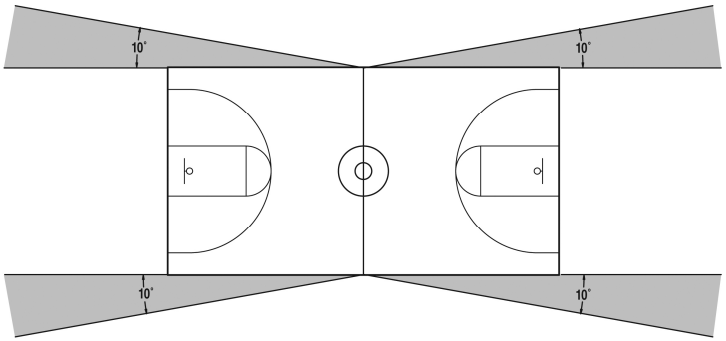
2.1 For new facilities or upgrades, it is recommended to consult a lighting professional for optimal luminaire placement and catwalk locations.
2.2 Optimal luminaire placement, mounting heights, and catwalk locations will impact playability and minimize glare and skip glare.
2.3 To achieve required vertical footcandles, some lights must be mounted beyond the sides of the indoor/outdoor basketball court.
2.4 As a general rule, due to mounting heights, lower wattage luminaires are used, commonly 1000 watt.
2.5 No luminaires are recommended in shaded areas directly aimed to the field of play.
3. Best Lighting Practices: Regional Broadcast
Following these recommended best practices will help ensure quality of light needed for the safety of participants, enjoyment of spectators, and quality regional television broadcasts, as required.
Horizontal light levels: 80 footcandles
Horizontal uniformity: 2.0:1
Vertical light levels: 75 footcandles to center main side camera (main camera)
45 footcandles to end line camera
Vertical uniformity: 2.0:1 to main side camera
Grid spacing: 10 ft x 10 ft
Typical facility layout:
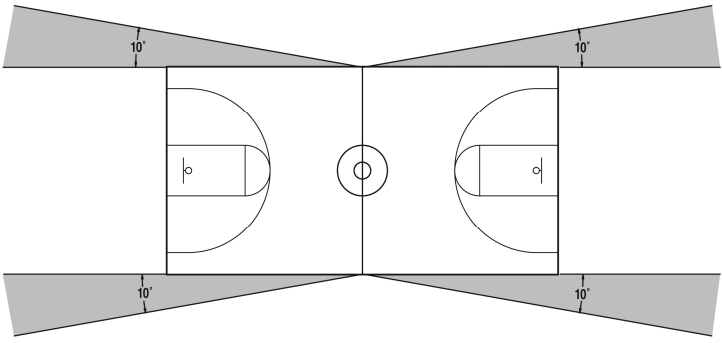
3.1 For new facilities or upgrades, it is recommended to consult a lighting professional for optimal luminaire placement and catwalk locations.
3.2 Optimal luminaire placement, mounting heights, and catwalk locations will impact playability and minimize glare and skip glare.
3.3 To achieve required vertical footcandles, some lights must be mounted beyond the sides of the indoor/outdoor court.
3.4 As a general rule, due to mounting heights, lower wattage luminaires are used, commonly 1000 watt.
3.5 No luminaires are recommended in shaded areas directly aimed to the field of play.
4. Best Lighting Practices: National Broadcast Final Site
Following these recommended best practices will help ensure quality of light needed for the safety of participants, enjoyment of spectators, and quality national championship final site television broadcasts, as required.
Horizontal light levels: 125 footcandles
Horizontal uniformity: 1.5:1
Vertical light levels: 125 footcandles to center main side camera (main camera)
75 footcandles to end camera
Vertical uniformity: 1.5:1 to main side camera
2.5:1 to end line camera
Grid spacing: 10 ft x 10 ft
Typical facility layout:
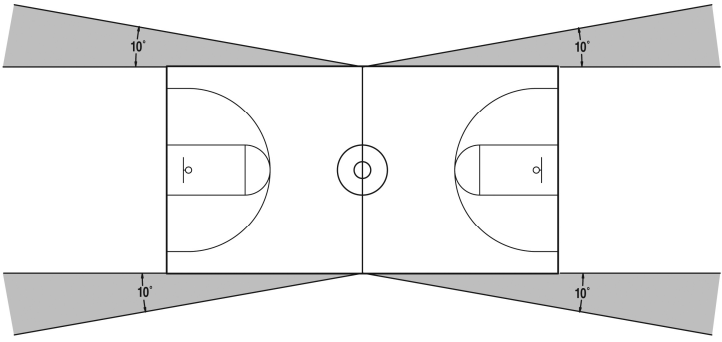
4.1 For new facilities or upgrades, it is recommended to consult a lighting professional for optimal luminaire placement and catwalk locations.
4.2 Optimal luminaire placement, mounting heights, and catwalk locations will impact playability and minimize glare and skip glare.
4.3 To achieve required vertical footcandles, some lights must be mounted beyond the sides of the indoor/outdoor court.
4.4 As a general rule, due to mounting heights, lower wattage luminaires are used, commonly 1000 watt.
4.5 No luminaires are recommended in shaded areas directly aimed to the field of play.
5. Best Lighting Practices: NCAA Basketball Championships
5.1 Goals:
5.1.1 Quality TV Broadcasts: To establish best practices for lighting televised NCAA events, providing quality broadcasts within a reasonable budget. The light level expectations are applicable for both SD and HD broadcast.
5.1.2 Value-based Lighting System: To provide recommended best practices for lighting college level sporting events with considerations for quality lighting for player safety; reduced energy, maintenance and life-cycle costs; and environmental sensitivity.
5.2 Considerations: 5.2.1 Size of facility, 5.2.2 Level of TV broadcast, 5.2.3 Validation of light levels, and 4. Cost consciousness.
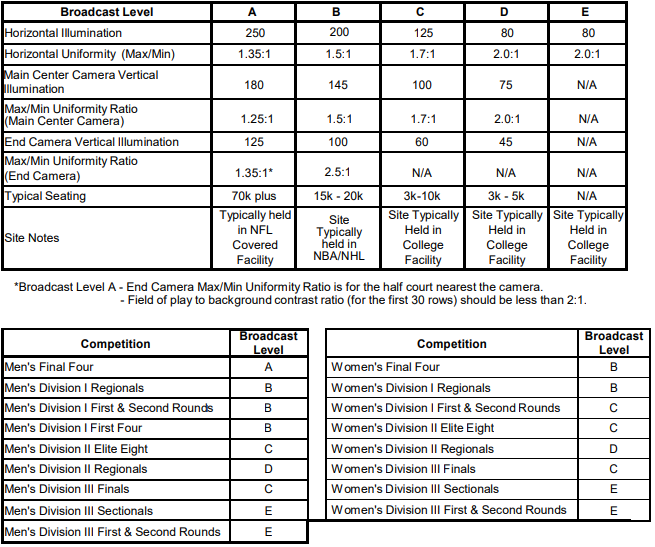
5.3 Notes:
5.3.1 All footcandle levels are target minimum averages
5.3.2 New lighting system designs are recommended to use 0.7 Recoverable Light Loss Factor or Constant Illumination
5.3.3 Lamp Characteristics a. Minimum color temperature must be 3600 degrees Kelvin b. Minimum Color Rendering Index (CRI) must be 65
5.3.4 Refer to the NCAA Broadcast Lighting Requirements for additional information
5.3.5 Refer to sport and broadcast specific documents for design examples and verification forms
6. Best Lighting Practices: Performance Checklist

7. Indoor/Outdoor Basketball Court Lighting Performance Checklist: Survey Sample
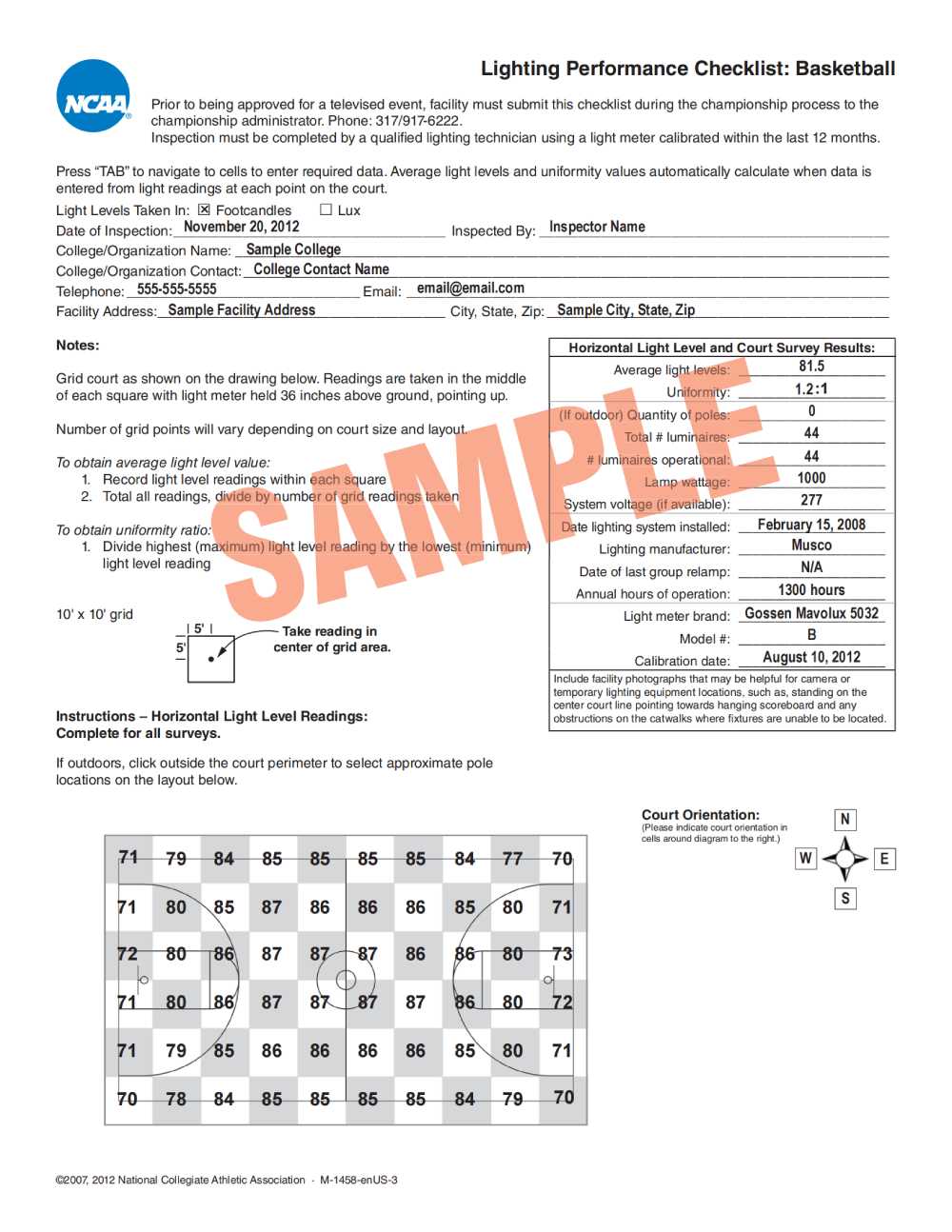
8. Best Flood lights For indoor/outdoor basketball court
basketball court Flood light A01 basketball court Flood light A02 basketball court Flood light B01
